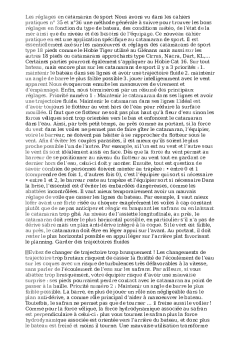Guide to us Aims ? To understand the basic principles and practical application of transthoracic ultrasound ? To be familiar with the sonographic appearance of the normal thorax ? To identify basic thoracic pathology ? To utilise ultrasound as guidance fo
Aims ? To understand the basic principles and practical application of transthoracic ultrasound ? To be familiar with the sonographic appearance of the normal thorax ? To identify basic thoracic pathology ? To utilise ultrasound as guidance for transthoracic interventions Image Aseev artem CFlorian von GrooteBidlingmaier Coenraad F N Koegelenberg Stellenbosch University and Tygerberg Academic Hospital Cape Town South Africa F von Groote-Bidlingmaier orianv sun ac za Stellenbosch University PO Box Tygerberg Cape Town South Africa A practical guide to transthoracic ultrasound Summary Transthoracic ultrasonography is a well-established yet underutilised imaging modality in respiratory medicine It allows for real- time and mobile assessment of thoracic disorders and can potentially augment the physical examination of the chest Moreover ultrasonography- assisted interventions can be performed by a single clinician without sedation and with minimal monitoring even outside of the operating theatre Other advantages of chest ultrasonography include the lack of radiation and the short examination time Many indications for the use of ultrasonography beyond the visualisation of the pleura and related conditions including e ?usions thickening and pneumothorax have been validated in the last few decades These include the assessment of diaphragmatic dysfunction pulmonary consolidation interstitial syndromes pulmonary embolism and pulmonary and mediastinal tumours provided they abut the pleura Transthoracic ultrasonography is an ideal guide for thoracocentesis Ultrasonography-assisted ?ne-needle aspiration and or cutting-needle biopsy of extrathoracic lymph nodes and lesions arising from the chest wall pleura peripheral lung and mediastinum are safe and have a high yield in the of hands of chest physicians Ultrasonography may also guide aspiration and biopsy of di ?use pulmonary in ?ltrates consolidations and lung abscesses provided the chest wall is abutted This review will focus on the basic indications and applications for transthoracic ultrasonography Statement of Interest None declared Transthoracic ultrasonography can be performed with a basic two- dimensional black-and-white ultrasound system more sophisticated modalities like M-mode or colour- ow Doppler are very rarely indicated A low-frequency probe ?? MHz with a curvilinear shape is suitable for screening of super ?cial and deeper structures where as a high-frequency probe ?? MHz with a linear shape is used for re ?ned assessment Higher frequency allows for superior resolution closer to the probe but at the cost of reduced penetration ?? A clinician should be familiar with the basic controls including the ? ? freeze ? ? ? ? depth ? ? and ? ? gain ? ? functions ?? The freeze function creates still images on which measurements can be performed using the track ball The depth function is a digital zoom that de ?nes what portion of the scanned image is displayed on the monitor at a certain magni ?cation The scale is displayed on a vertical axis High- frequency scanning is performed at a maximum depth of around ?? cm HERMES syllabus link Module D DOI Breathe December Volume No CTransthoracic ultrasound The depth should preferably be adjusted to allow the area of interest to ?ll the digital screen The gain is in essence a
Documents similaires










-
71
-
0
-
0
Licence et utilisation
Gratuit pour un usage personnel Attribution requise- Détails
- Publié le Jui 08, 2022
- Catégorie Creative Arts / Ar...
- Langue French
- Taille du fichier 73.8kB


